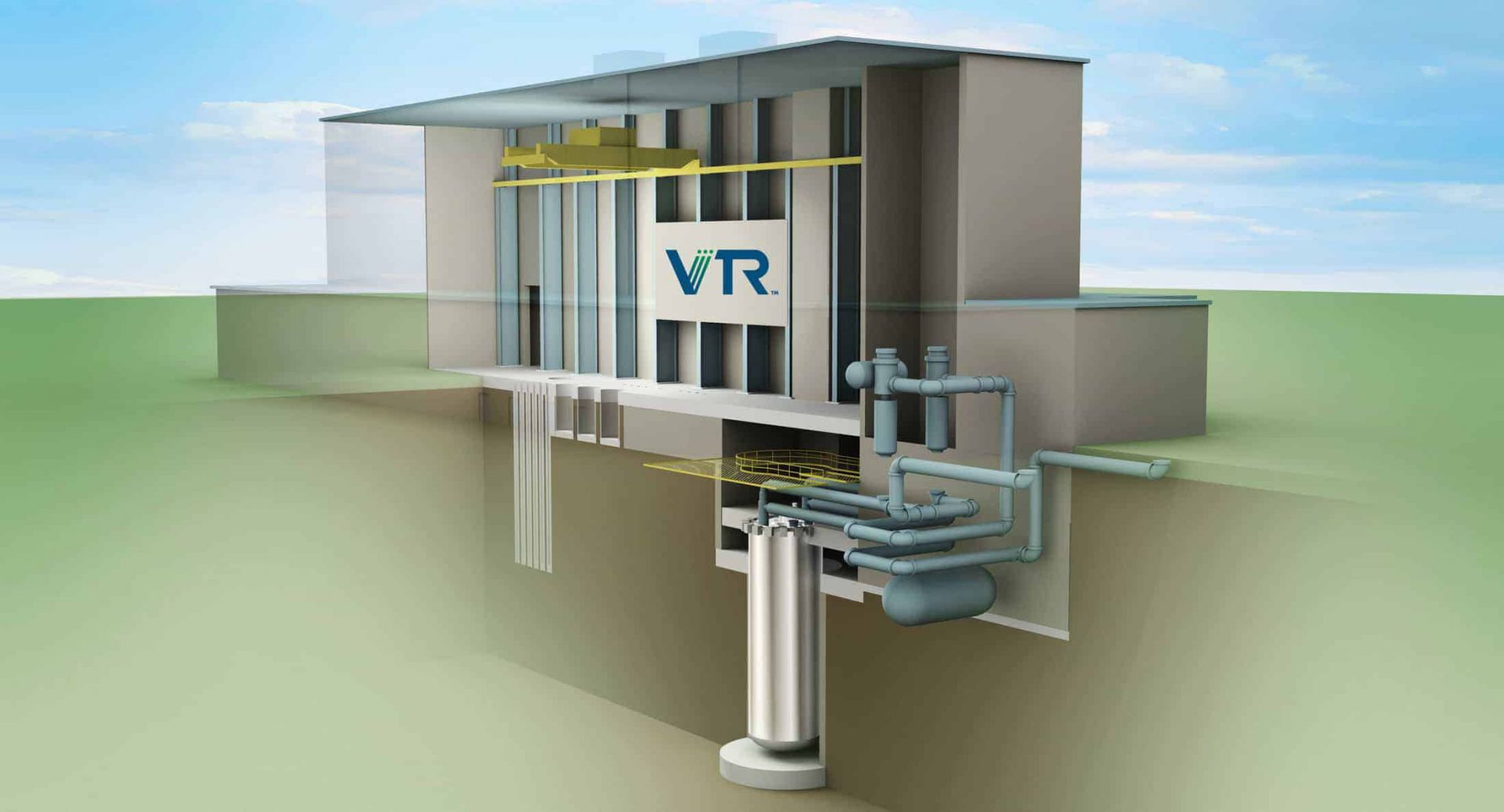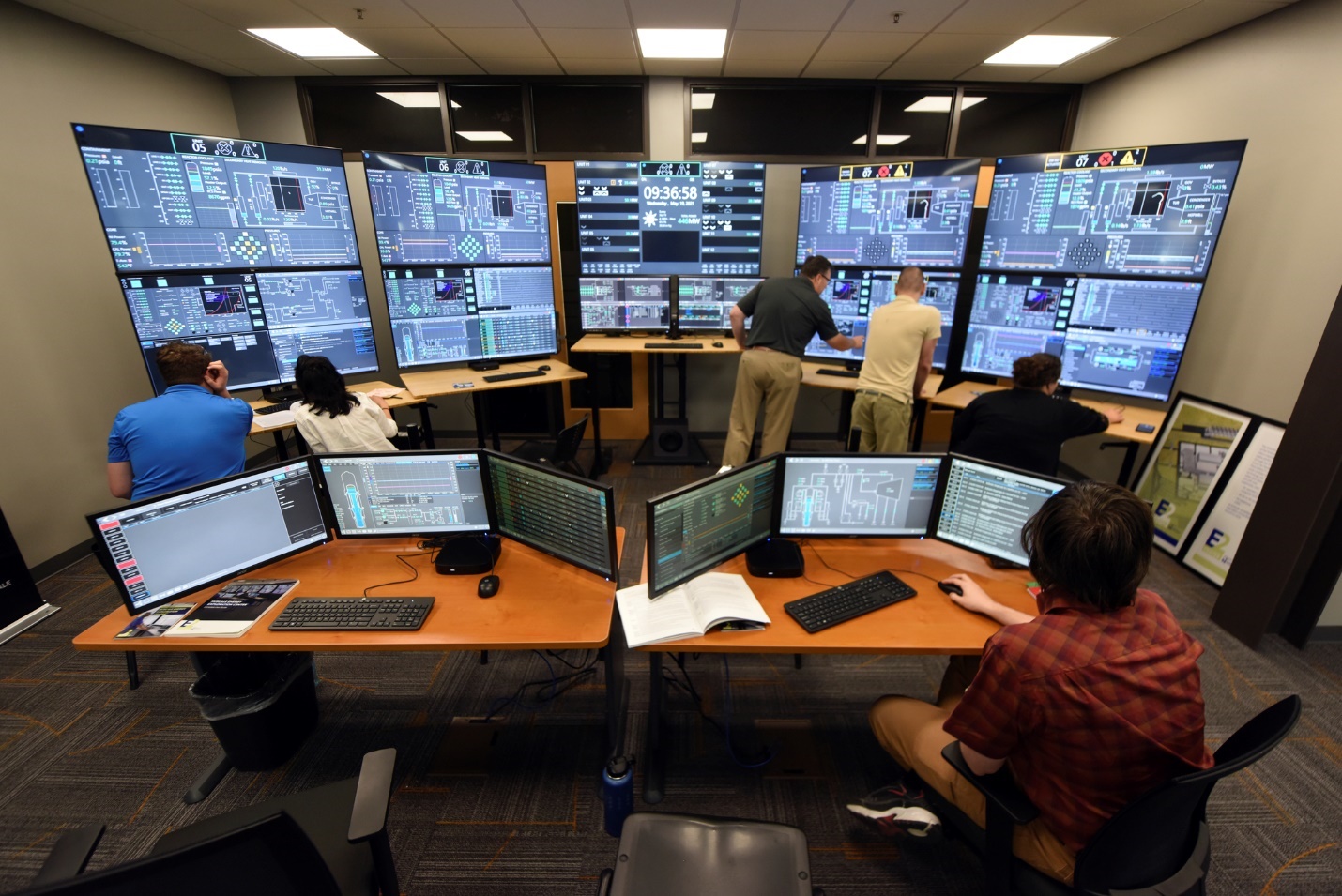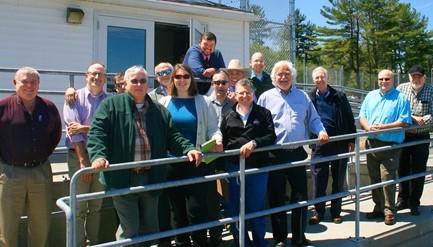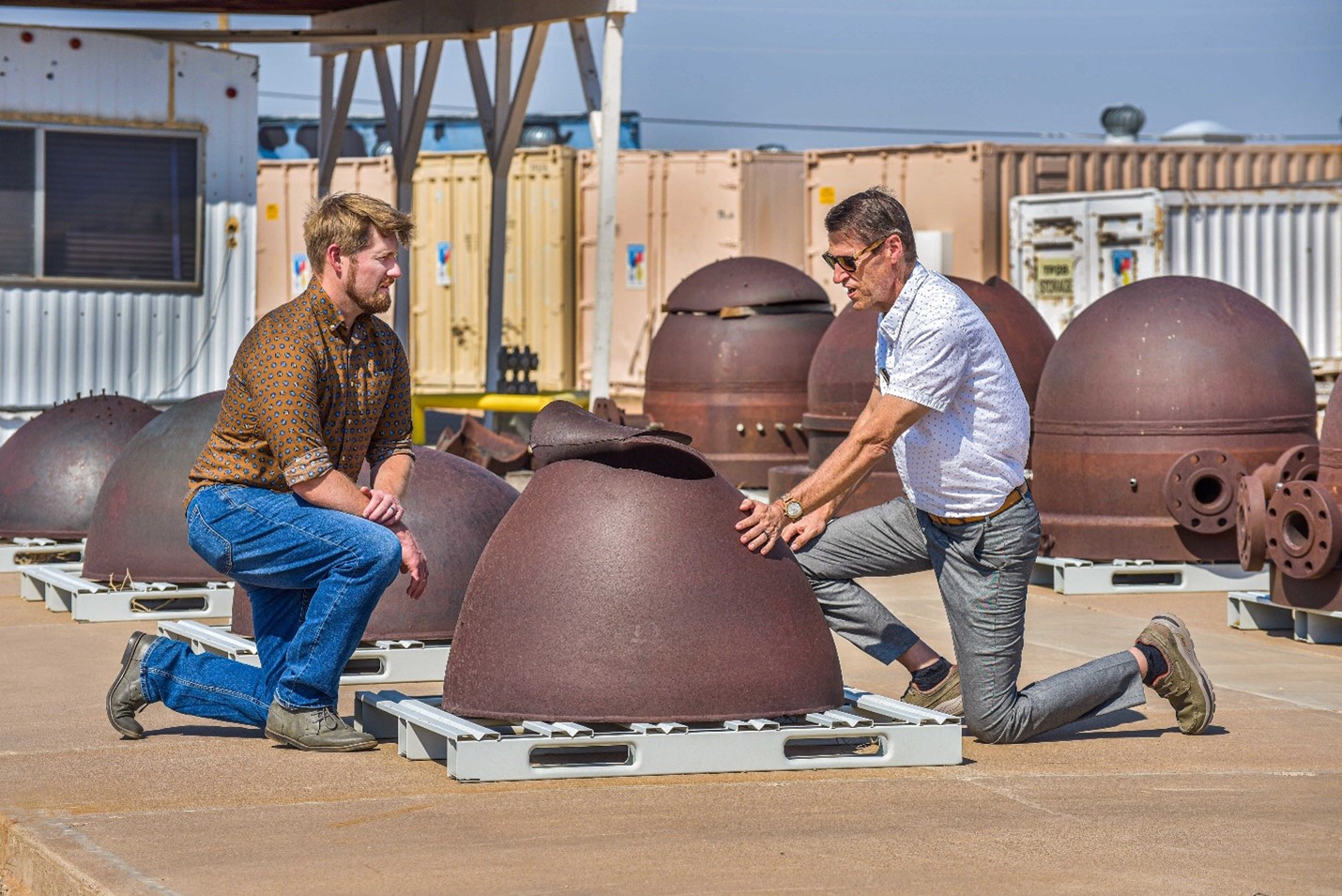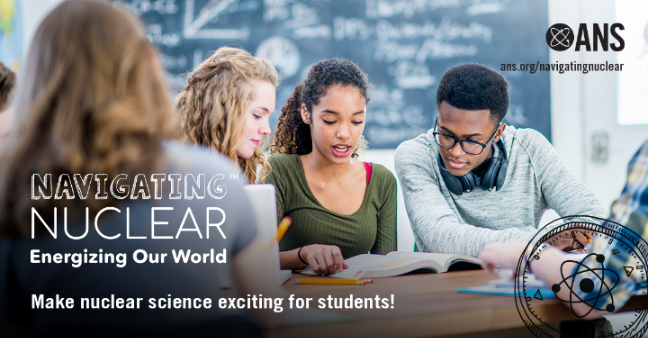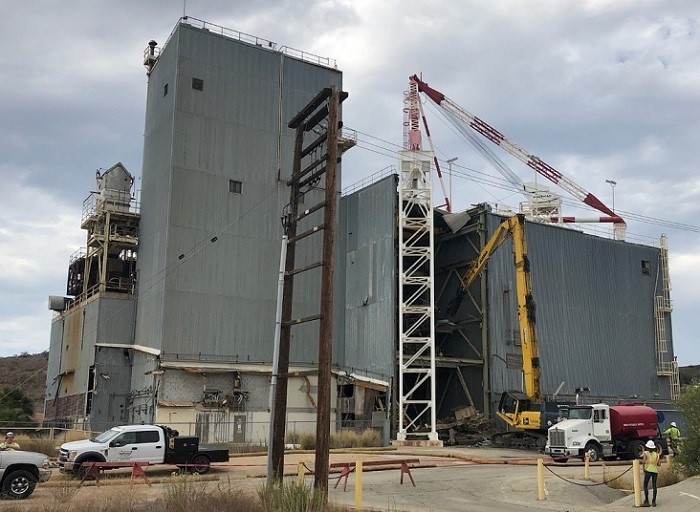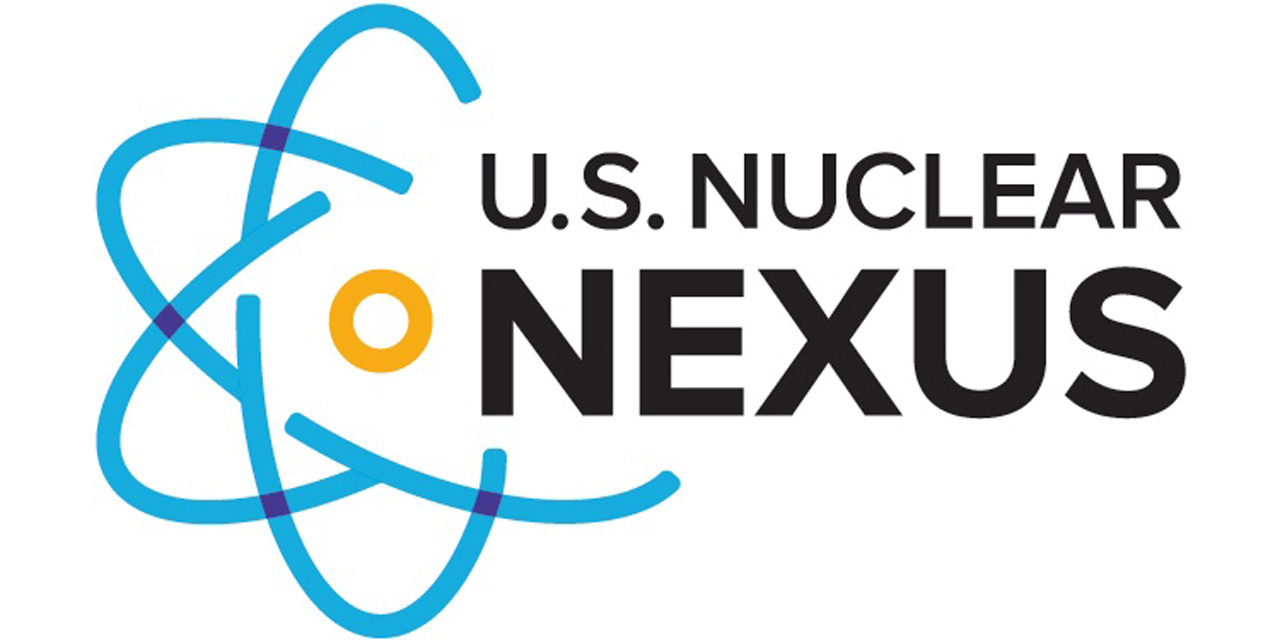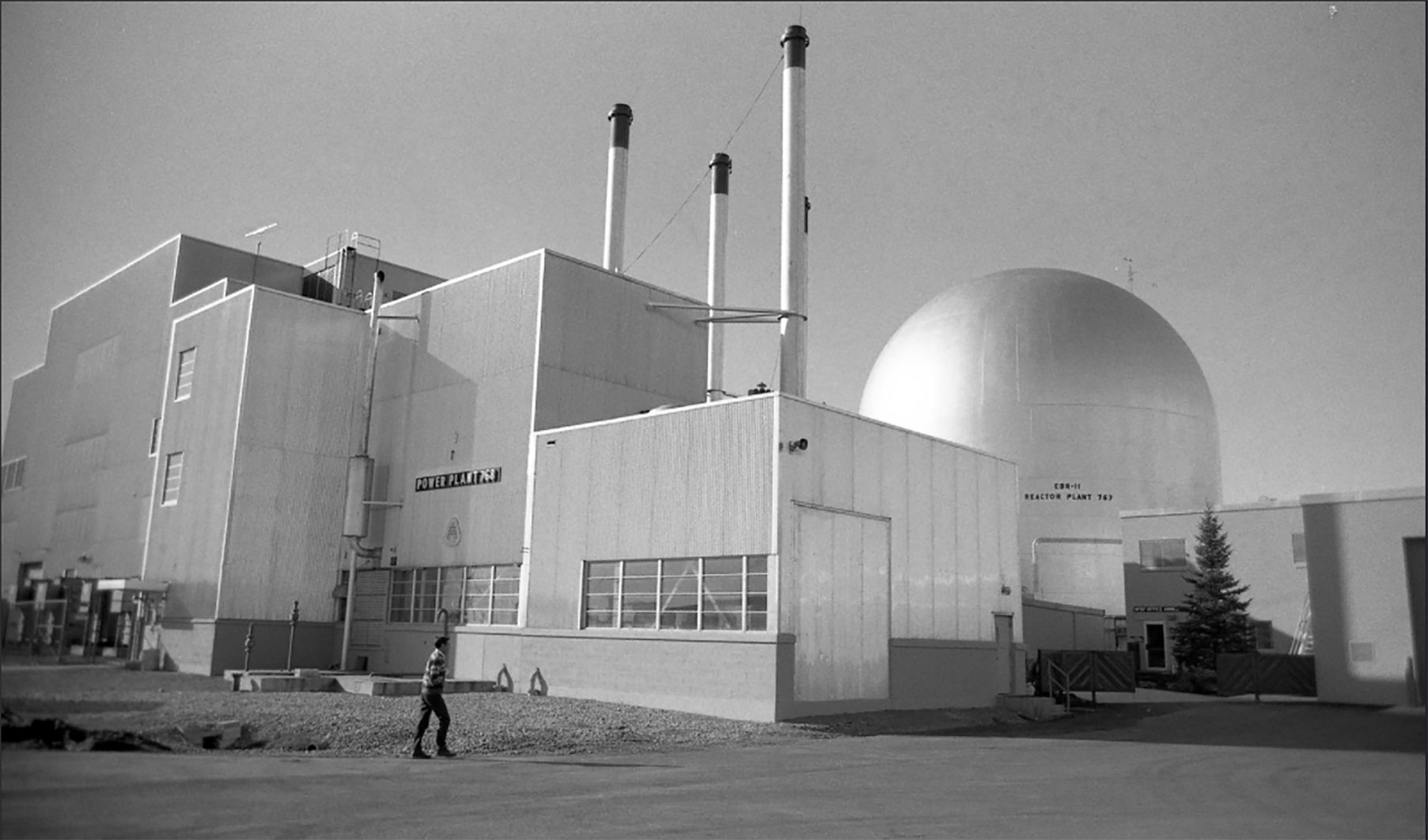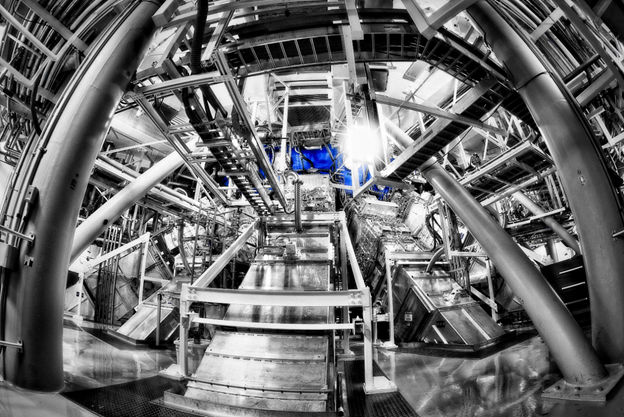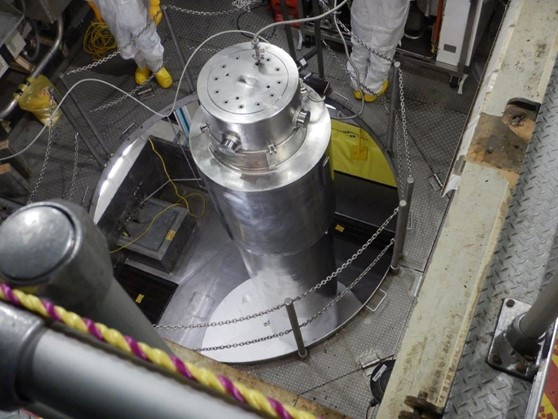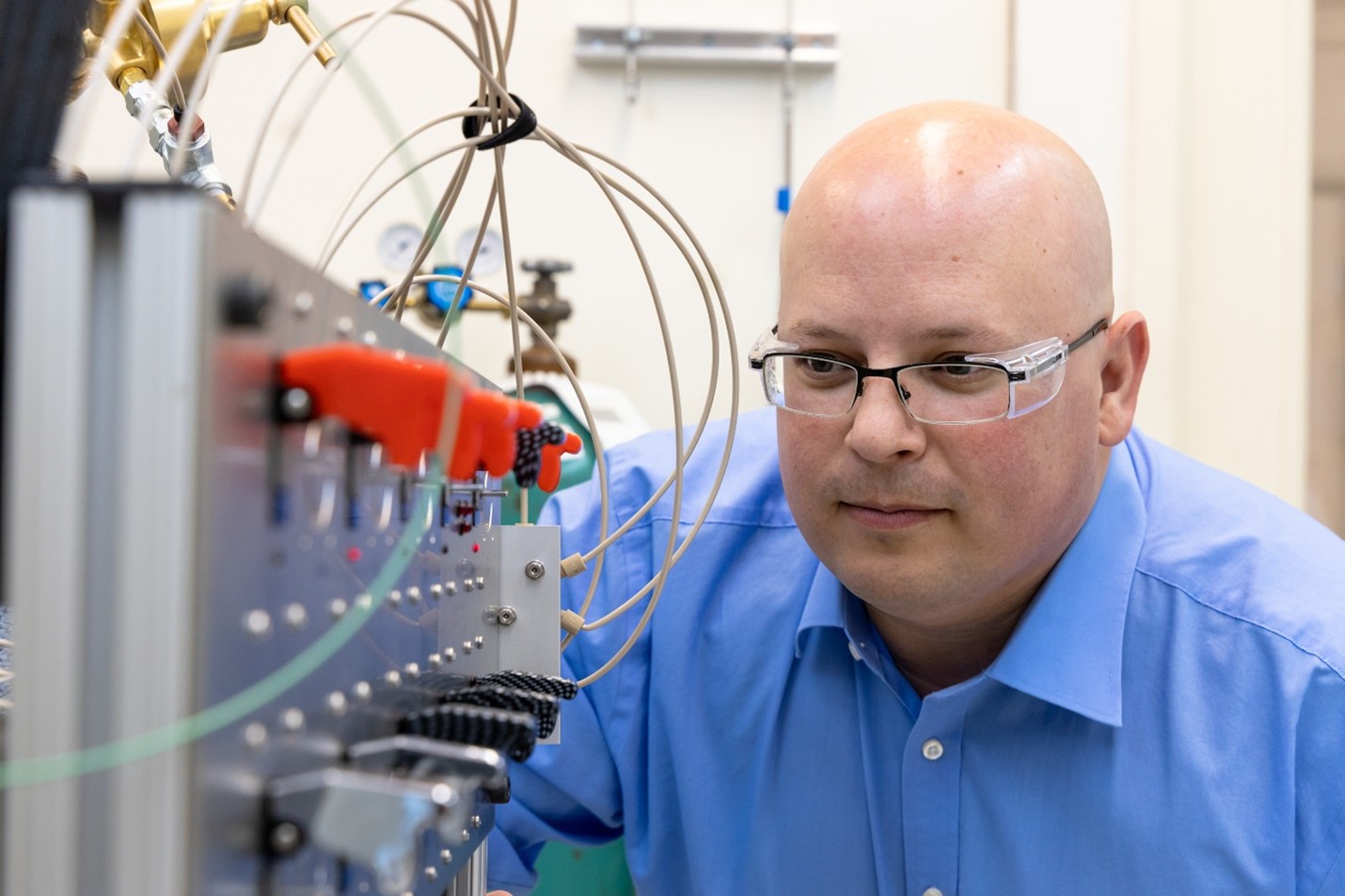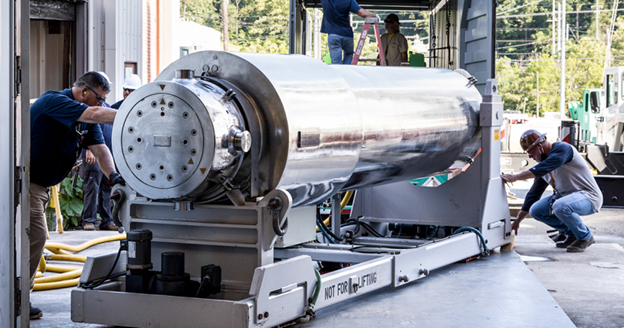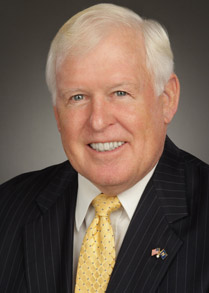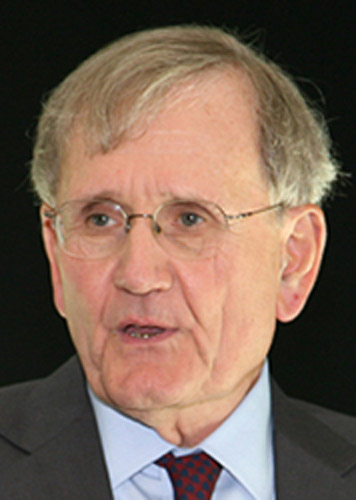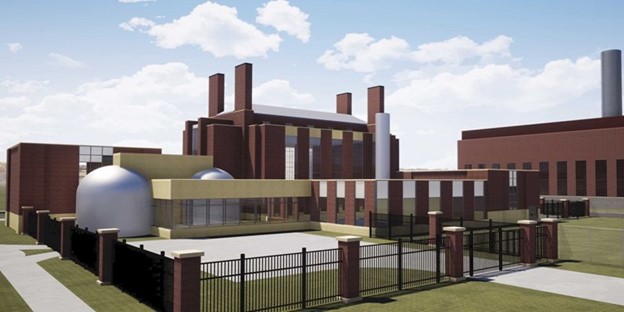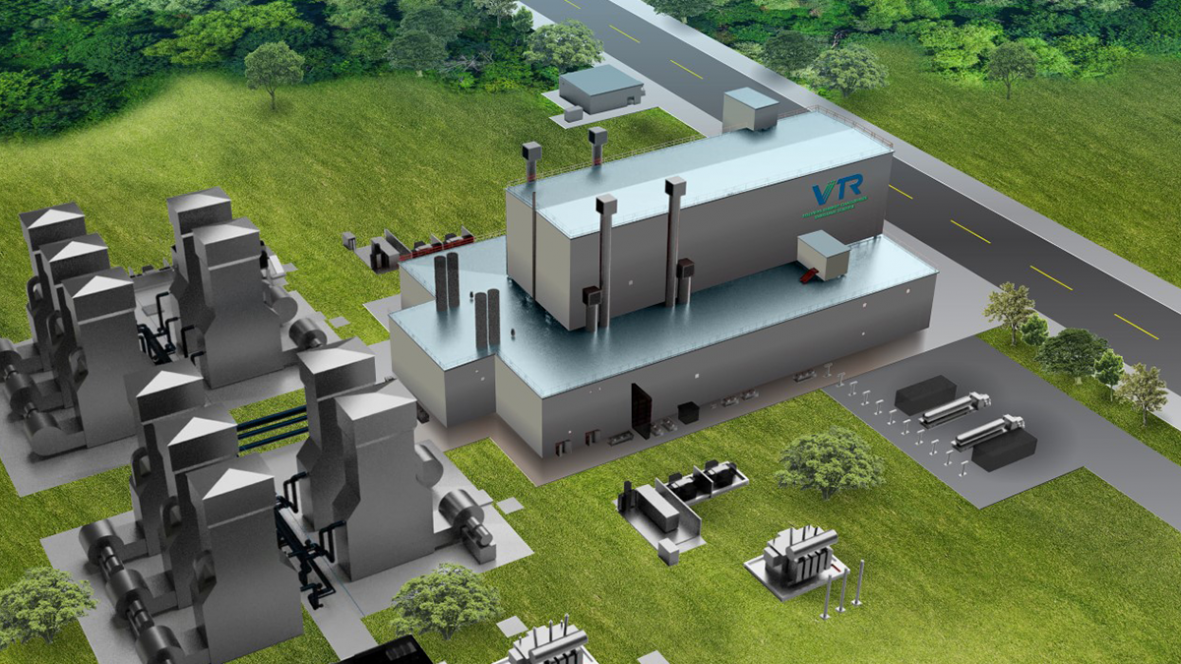A rendition of the VTR. (Graphic: DOE)
In an op-ed published online yesterday in The Hill, Ted Nordhaus and Adam Stein of the Breakthrough Institute pick apart arguments made against funding for the construction of the Versatile Test Reactor at Idaho National Laboratory. Nordhaus and Stein contend that opposition to the VTR has been led by “entrenched opponents of nuclear energy” who “fear that innovation of the sort that many U.S. nuclear startups are presently betting on might give the technology a second life.”
A NuScale representative conducts training on the nuclear power plant control room simulator for students and faculty at CAES. (Photo: CAES)
The Center for Advanced Energy Studies (CAES) has announced the opening of the Small Modular Reactor Simulator Laboratory, featuring NuScale Power’s Energy Exploration Center, at its headquarters in Idaho Falls, Idaho. The new lab will increase CAES’s capabilities to train future scientists, engineers, and members of the energy workforce and will be used to educate the public about nuclear energy and reactor technology, according to an August 31 CAES press release.
Participants in a site evaluation of the Vermont Yankee nuclear power plant. (Photo: Steve Maheras/PNNL)
Over the past decade, the Department of Energy has been collecting data on nuclear power plants to help plan for the eventual removal of spent nuclear fuel from the sites, performing site evaluations to assess transportation infrastructure and the transportability of spent fuel.
Sandia's Brad Beeny (left) and Larry Humphries examine remnants from a series of lower head failure experiments. Results from these and other experiments are used to inform nuclear accident modeling computer code. (Photo: Randy Montoya)
Researchers at Sandia National Laboratories have been expanding MELCOR—the severe accident modeling computer code used by the Nuclear Regulatory Commission to evaluate the safety of light water reactors—to study the small modular reactors and non-light-water advanced reactors that are under development. An article published in Sandia Lab News on August 27 describes in detail how MELCOR is being expanded to work with different reactor geometries, fuel types, and coolant systems.
Workers use high-reach shears to begin demolition of the Sodium Pump Test Facility at the former Energy Technology Engineering Center in California. (Photo: DOE)
Crews are in the homestretch of completing demolition of Department of Energy–owned buildings at the former Energy Technology Engineering Center (ETEC) site in Ventura County, California, the agency reported on August 24.
The EBR-II sodium fast reactor at Idaho National Laboratory began operations in 1964 and generated electricity for decades. Soon it will serve as a National Reactor Innovation Center test bed for future advanced reactor demonstrations. (Source: ANL)
At the box office or streaming at home, it’s fear, not truth, that sells. The laws of physics are swept aside, apocalypse is inevitable, and superpowered heroes wait until the last possible second to save the universe. It can make for great entertainment, but in the real world we need to stick with science over science fiction and be wowed by engineering, not special effects.
The truth is, science and innovation are incredible in their own right. From communications and machine learning to space travel and medical advances, technology is evolving in hyperdrive to solve real problems. With climate change and global warming here on earth, we don’t have to go looking for trouble in a galaxy far, far away.
A color-enhanced photograph of the NIF target bay. (Photo: LLNL/Damien Jemison)
Lawrence Livermore National Laboratory is celebrating the yield from an experiment at the National Ignition Facility (NIF) of more than 1.3 megajoules of energy—eight times more than the yield from experiments conducted this spring and 25 times more than NIF’s 2018 record yield.
A satellite image of Hawaii. Image: NASA
Jacob Wiencek, a self-described concerned resident of Honolulu, is doing his part to encourage the state of Hawaii to embrace nuclear power. An opinion piece written by Wiencek was published in Honolulu Civil Beat, an online, nonprofit news site, on August 4.
A shipping cask containing high-burnup fuel rods from Dominion Virginia Power’s North Anna nuclear plant is prepared for shipment to Oak Ridge National Laboratory for study. (Photo: EPRI/Dominion Energy)
Chemist Kevin Gaddis has adapted components of a high-pressure ion chromatography system to withstand the extreme conditions of a hot cell. (Photo: ORNL/Carlos Jones)
An Oak Ridge National Laboratory researcher has built a device that can speed up the separation of the medical radioisotope actinium-225 from irradiated thorium targets and withstand the high-radiation environment of a hot cell. In July, ORNL announced that Kevin Gaddis, a chemistry technician at the lab, had built and tested a prototype and was working to secure a patent for a device that cut separations time by 75 percent.
Irradiated lead test rods are delivered to Oak Ridge National Laboratory for examination. (Photo: ORNL)
Several lead test rods of Westinghouse’s EnCore accident tolerant fuel recently arrived at Oak Ridge National Laboratory for post-irradiation examination over the next year in support of the Nuclear Regulatory Commission’s licensing process. The rods were installed in 2019 in Exelon’s Byron-2, a 1,158-MWe pressurized water reactor, and were removed in fall 2020 and prepared for shipment to ORNL.
A rendering of Ultra Safe Nuclear Corporation’s micro modular reactor as proposed for construction on the University of Illinois at Urbana-Champaign campus. (Graphic: USNC)
A bipartisan group of legislators has introduced a bill to invest in university nuclear science and engineering infrastructure, establish regional consortia to promote collaboration with industry and national laboratories, and support the development of advanced reactor technology. The National Nuclear University Research Infrastructure Reinvestment Act of 2021 (H.R. 4819) was introduced in the House of Representatives by Reps. Anthony Gonzalez (R., Ohio), Sean Casten (D., Ill.), Peter Meijer (R., Mich.), and Bill Foster (D., Ill).
A rendering of the VTR facility. (Image: INL)
Kathryn Huff, the Department of Energy’s acting assistant secretary for nuclear energy, asserted in an article published online by the Office of Nuclear Energy (DOE-NE) on July 30 that demonstration reactors, such as the Natrium and Xe-100 reactors being built as full-size power producers with cost-shared funding from the DOE, and test reactors, such as the Versatile Test Reactor, are both necessary for nuclear innovation. Both are also line items in the DOE budget request, and Huff’s article sends a clear message to appropriators about the need to fund both the Advanced Reactor Demonstration Program (ARDP) and the VTR.



